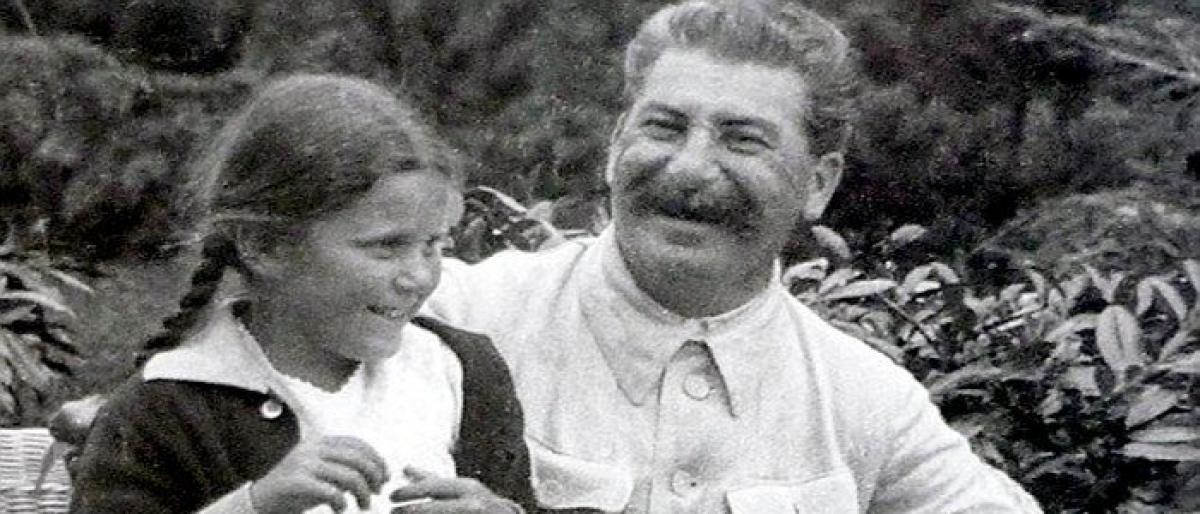Live
- Study Reveals Teabags Release Billions of Microplastics and Nanoplastics, Entering Your Body
- Kumbh Mela 2025: Essential Guide to Comfortable and Respectful Attire for Maha Kumbh
- Hyderabad Real Estate Faces Setback: Property Sales Drop 7% Year-on-Year in 2024
- Gnani’s Gen AI Solutions Revolutionising BFSI
- Trump's WHO threat sparks debate on the efficiency of global health governance
- ICC Champions Trophy 2025 Schedule: India vs Pakistan Match Set for February 23 in Dubai
- Champions Trophy 2025: Full Schedule, Match Dates, Venues, Timings, and Updates
- FRAI Urges Government to Provide Technology Platform for Kirana Stores to Stay Competitive
- Not just Gen Z, millennials too: Redditors discuss the wave of pet parenthood embraced by young Indians
- Innovation can expedite the journey to a Smoke-Free future- in focus at Technovation Abu Dhabi
Just In

There have been many books of letters from the wartime, letters by famous authors, politicians, leaders, love letters We in India too have had books compiling letters, Jawaharlal Nehrus letters to his daughter India, for example, have been published as two monumental books of history Glimpses of World History and Discovery of India
There have been many books of letters – from the wartime, letters by famous authors, politicians, leaders, love letters. We in India too have had books compiling letters, Jawaharlal Nehru’s letters to his daughter India, for example, have been published as two monumental books of history – ‘Glimpses of World History’ and ‘Discovery of India’.
The first Prime Minister of India and a popular leader of freedom movement kept in touch with his daughter during his imprisonment and made up for his absence in her life by educating her through his letters. Historian, author Simon Sebag Montefiore’s book – ‘Written In History – Letters That Changed The World’ published by Hachette India comes at a time when letter writing as an art is on a wane.
From the time writing developed - the ancient times when a reed stylus was used over a clay tablet to the early form of Papyrus, the parchment or animal skin used for writing, to using ink on a paper; for the letter writers ranging from the kings and elite, artists and commoners to the change makers who wanted to influence people with their letters before Internet took over, letter writing went beyond just communication. Many letters of the yore are today documents of history and a peek into the lifestyle of the times.
Simon, who considers letters to be an important vehicle to understand history has compiled for his book letters that are not just entertaining but have changed human affairs, whether in war or peace, art or culture, from the ancient times to the modern age. He says with the internet and electronic exchange of mails and information increasingly being intercepted using technology, letter writing as a means of confidential communication is being preferred by the great nations of the world and is surely making a comeback.
And to reiterate the return of letters, he has included in the book a letter from US President Donald Trump to North Korean dictator Kim Jong Un on May 24, 2018. It is interesting that Trump chose to write instead of a phone or an email, and this is probably the first time an American President has issued a threat directly by revealing America’s nuclear capability – He says, ‘You talk about your nuclear capabilities, but ours are so massive and powerful that I pray to God they will never have to be used’.
In contrast, there is this letter written in AD 961 by Abd al-Rahman III, an important Arab ruler reigning Al-Andalus, the Muslim Kingdom of Spain. He had won many wars and at one point had declared himself Caliph-Commander of The Faithful and had written a letter to the world damning Abbasid Caliphs of Baghdad.
He had written the letter to his successor from his deathbed where he was philosophical of all his victories and successes through the 50 years of his reign – He writes, ‘I have diligently numbered the days of pure and genuine happiness which have fallen to my lot; they amount to FOURTEEN:- O, man! Place not thy confidence in this present world! Interesting isn’t it.
There are many such letters in this book, a few so small that they could have belonged to this Facebook and WhatsApp generation, and some are lengthy and informative. Each letter is classified into broad categories and is preceded by author’s commentary on the person, a small biography and the premise of the letter. The above-mentioned letter is from a section named – Goodbye.
Letters are more sincere except when the writer intentionally edits it for his purpose. Letters show an unknown facet of a personality. One such extremely short note was sent by the much-feared Josef Stalin to his schoolgirl mistress where he sends his passionate ‘Kiiissssing’ to her. The book ‘Written In History’ also has a small note from Stalin’s daughter. A brief banter of a game between Stalin and daughter Svetlana where she plays the Boss and him her secretary and she writes her commands to him which he dutifully signs is surely endearing for the man who had terrorised the Soviet people.
Also, one gets to read a rejection slip that George Orwell received for his ‘Animal Farm’ from none other than the famous poet TS Eliot, who incidentally was also the publisher at Faber and Faber. Simon says – Eliot’s patronising rejection must rank as one of the most embarrassing mistakes in publishing history. One reads the letter and understands why.
Montefiore’s compilation of letters is exciting, inspiring, informative, enlightening and entertaining to say the least, and the fact that they are drawn from three thousand years ago written by the pharaohs of Egypt to the modern-day Donald Trump makes it an interesting collection.

© 2024 Hyderabad Media House Limited/The Hans India. All rights reserved. Powered by hocalwire.com







